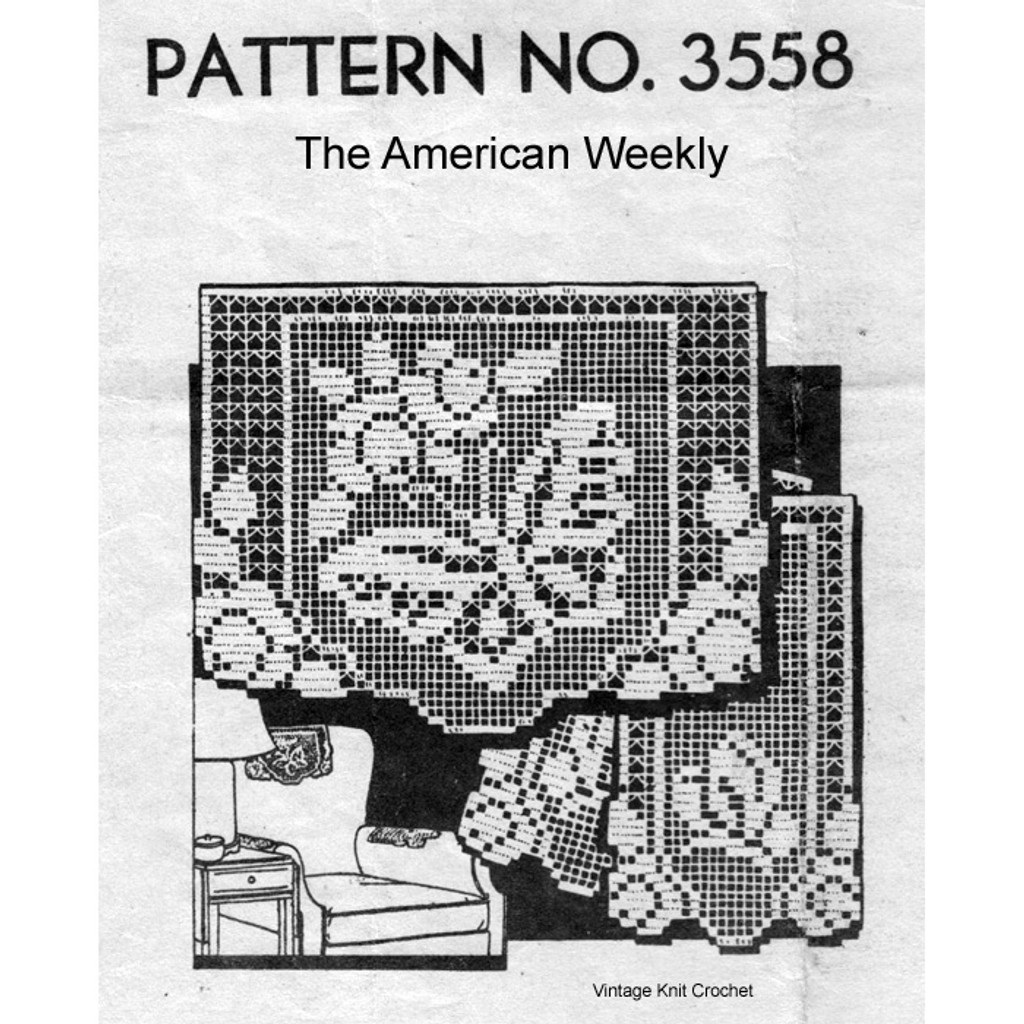And, just like the other mail order services, the reader sent a note with the pattern number and payment and a couple weeks later the pattern arrived in the mail.
The pattern service started in 1936. The first couple years, the offerings were sewing patterns only. Then, in 1938, the patterns began expanding into the usual sewing, crochet, knitting and embroidery.
The patterns were in the same 'known' mail order format - the large large 17 x 22 inch single sheet of paper, folded into sections. The needlework patterns typically included large pattern stitch diagrams and blocking charts, when appropriate.
The pattern offered by The American Weekly were the same Designs of Laura Wheeler / Alice Brooks. The same cover pictures, as well as directions and diagrams were the same. Only difference - the pattern name displayed and the envelopes and the pattern numbers themselves. The American Weekly patterns were in the 3000 through 3800 series, depending upon the pattern type.
Notes: In the 3100 number series.
An August 28, 1949 newspaper reported that The American Weekly pattern sales were 260,000 for a month. Now, it would be interesting to know if that was exclusive to The American Weekly, or that was the 'Readers Mail' syndicate.
There are very few newspaper references on The American Weekly papers. The paper was published on very thin paper, which did not stand-up to time - i.e., being scanned into archives. (What a real loss!). There are a few references out there in Internet land as there were a couple newspapers - for example Cincinnati OH, that printed the Womens section in their newspaper page, not as a separate circular.
The American Weekly Publication was discontinued in 1966.
If you'd care to look, I have a number of these patterns in the shop (and more waiting to be entered). If you happen to know more information about The American Weekly Patterns, I'd appreciate your sharing!
Thanks for dropping by.

































